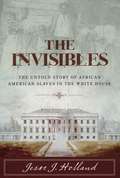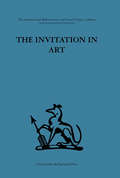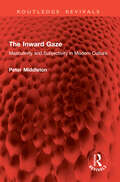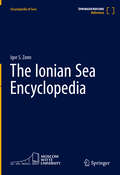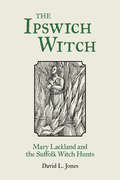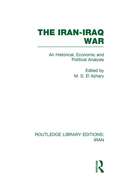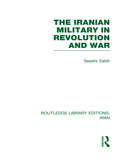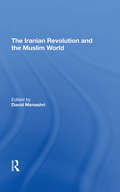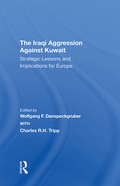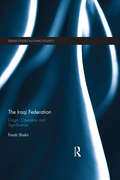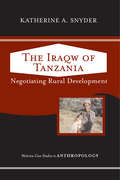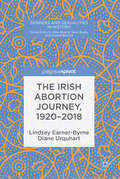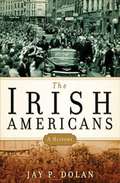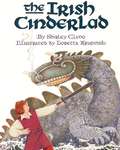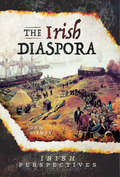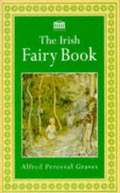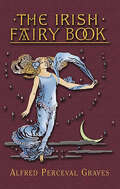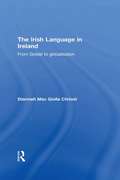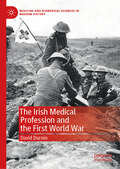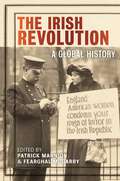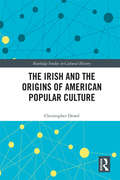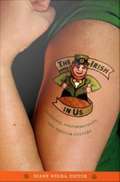- Table View
- List View
The Invisibles: The Untold Story of African American Slaves in the White House
by Jesse J. HollandTHE INVISIBLES: Slavery Inside The White House and How It Helped Shape America is the first book to tell the story of the executive mansion's most unexpected residents, the African American slaves who lived with the U. S. presidents who owned them. Interest in African Americans and the White House are at an all-time high due to the historic presidency of Barack Obama, and the soon-to-be-opened Smithsonian National Museum of African American Culture and History. The Invisibles chronicles the African American presence inside the White House from its beginnings in 1782 until 1862, when President Abraham Lincoln issued the Emancipation Proclamation that granted slaves their freedom. During these years, slaves were the only African Americans to whom the most powerful men in the United States were exposed on a daily, and familiar, basis. By reading about these often-intimate relationships, readers will better understand some of the views that various presidents held about class and race in American society, and how these slaves contributed not only to the life and comforts of the presidents they served, but to America as a whole. "
The Invitation in Art
by Adrian StokesTavistock Press was established as a co-operative venture between the Tavistock Institute and Routledge & Kegan Paul (RKP) in the 1950s to produce a series of major contributions across the social sciences. This volume is part of a 2001 reissue of a selection of those important works which have since gone out of print, or are difficult to locate. Published by Routledge, 112 volumes in total are being brought together under the name The International Behavioural and Social Sciences Library: Classics from the Tavistock Press. Reproduced here in facsimile, this volume was originally published in 1965 and is available individually. The collection is also available in a number of themed mini-sets of between 5 and 13 volumes, or as a complete collection.
The Inward Gaze: Masculinity and Subjectivity in Modern Culture (Routledge Revivals)
by Peter MiddletonFirst published in 1992, The Inward Gaze looks at men’s fantasies and self-images from a wide range of texts (notably boy’s superhero comics, modernist literary classics, and a Freudian case-study) to discuss the theories of subjectivity, masculinity, and emotion.The author explores the split between the experience-based claims of the men’s movement and the discourse theories of postmodernism. Does this division reveal a continuing refusal of masculine self-awareness? Why does postmodernist theory investigate desire and ignore emotion?This is a ground-breaking and controversial book which seeks to reformulate the way we think about men’s subjectivity. Its interdisciplinary approach weaves together material from many different sources and will be of vital interest to students of literature, cultural studies, gender studies, and psychoanalysis.
The Ionian Sea Encyclopedia (Encyclopedia of Seas)
by Igor S. ZonnThe book is dedicated to the Ionian Sea, which is part of the Mediterranean. The encyclopedia contains about 600 articles on the hydrographic and geographic objects, hydrological features of the sea, biological resources, as well as administrative-territorial units of the Ionian countries. The most significant natural objects like islands, peninsulas, bays, rivers, mountains, their geographical peculiarities are briefly described as well as economy, culture and history, cities, ports, international agreements, research institutions, activities of outstanding scientists, researchers, travelers are presented in the publication. The chronology of the main historical events that have become significant landmarks in the history of discovery and exploration of the Ionian Sea from the 31 B.C. to the present day is given.
The Ipswich Witch: Mary Lackland and the Suffolk Witch Hunts
by David L. JonesAgainst the backdrop of the largest witch hunt in English history, this book is both an investigation of a miscarriage of justice 366 years old and an in-depth recreation of East Anglia as it once was. Ipswich, faced by the extreme challenges of war, religious dissent, poverty, sickness and the threat of foreign invasion, became an ideological battlefield during the civil wars. As Puritanism struggled against Catholic sensibilities, the Devil himself loomed at the door of every English home, and the age of the witchfinder was born. This book aims to challenge some of our stereotypes of the period, and to show how witch hunts do not stand apart from history but reflect the growth in Puritan sects, gender politics, the exploitation of the poor, the importance of popular beliefs in the occult and the rise of English power in the New world. Written by David L. Jones of the Ipswich Museum, and inspired by his time living in rural Nepal, where witchcraft is considered an everyday reality, it will fascinate visitors and residents alike.
The Iran-Iraq War: An Historical, Economic And Political Analysis (Routledge Library Editions: Iran)
by M. S. EL-AzharyThe Iran-Iraq war broke out in September 1980. It brought death and suffering to hundreds of thousands of people on both sides and devastated the economies of both countries. It also increased international tensions by precipitating new alliances and rearrangement of forces in the already turbulent Middle East. The focus of this book is on the historical, economic and political dimensions of the war between Iraq and Iran. It examines many aspects of what proved to be a very complex conflict; including its long history, its present economic and political setting, the different responses to the war by outside parties and its regional and world implications.
The Iran-Iraq War: Antecedents and Conflict Escalation (Routledge Studies in Middle Eastern Politics)
by Jerome DonovanIn a tradition that dates back to the time of Thucydides, and the Peloponnesian War, the systematic examination of conflict and war has long been a preoccupation of political scientists seeking to resolve the enduring question: Why do wars occur? This study directly engages this question with a specific focus on explaining the conflict between Iran and Iraq, arguably the longest and one of the more costly conventional wars of the twentieth century. Explaining the systemic nature of conflict within the Middle East, and specifically between Iran and Iraq, the book illustrates how IR theory can be utilised in explaining conflict dynamics in the Middle East. The author’s integrated approach to understanding interstate conflict escalation demonstrates that when taken together issues, interaction and power capabilities lend themselves to a much richer account of the dyadic relationship between Iran and Iraq in the lead up to war in 1980. Addressing a disparity between international relations and Middle Eastern area studies, this book fills an important gap in the existing scholarly literature on the causes of war. As such, it will be of great interest to scholars of peace and conflict studies, Middle Eastern studies and International Relations.
The Iranian Military in Revolution and War (Routledge Library Editions: Iran)
by Sepehr ZabirThis book is a fascinating critical examination of the characteristics and development of the armed forces in Iran, their role under the Shah and their re-creation in the war against Iraq as the fighting forces of Islam. The author examines the contradictory accounts, including the Shah’s own Answer to History, as well as newly available accounts by highly placed ex-officials, and interviews with exiled army officers. He examines in detail the apparent shift of allegiance within the forces from the Shah to Imam and the ways in which this was accomplished. Major Iranian offensives, changing strategies from human wave assault to the Tankers War, and the delicate balance between the regular Army and the Revolutionary Guards, are also extensively examined. The book concludes with an analysis of the potential role of the armed forces in a succession crisis.
The Iranian Revolution And The Muslim World
by David MenashriThis book delineates the Islamic revolution's impact mainly on the Muslim Middle East and examines the first decade of the revolution. It deals with the repercussions of the revolution in several Shi'i communities and examines Sunni polemical writings on the Shi'a and the Iranian revolution.
The Iraq War: Origins and Consequences
by James DeFronzoThis book explains why the Iraq War took place, and the war's impacts on Iraq, the United States, the Middle East, and other nations around the world. It explores conflict's potential consequences for future rationales for war, foreign policy, the United Nations, and international law and justice.
The Iraqi Aggression Against Kuwait: Strategic Lessons And Implications For Europe
by Charles Tripp Wolfgang F. DanspeckgruberThe war for the liberation of Kuwait following the Iraqi invasion in 1990 rekindled the international community's geopolitical interest in the Gulf and helped define a new regional order. This book analyzes the political, strategic, and economic dimensions of the second Gulf War, with particular focus on military aspects. An international roster of experts treats issues of strategy, weapons technology, arms transfers, and the impact on the Arab state system. Of special interest is the exploration of the implications of the war for Japan, Germany, Russia, and Europe.
The Iraqi Federation: Origin, Operation and Significance (Exeter Studies in Ethno Politics)
by Farah ShakirPolitical instability has characterised the modern history of Iraq, which has proven itself as a complex state to govern. However, the creation of a federal system in 2005 offers the potential for change and a deviation from a past characterised by authoritarian government, brutality and war. The Iraqi Federation explores why and how Iraq became a federal state, and analyses how the process of formation impacts on the operation of the Iraqi federal system. It argues that the different approaches taken by various federal theorists in the past, particularly William H. Riker’s bargain theory, are insufficient to explain the formation of the Iraqi federation completely. The process of the establishment of a federal Iraq must be understood in the context of its unique history and cultural specificity, as well as in the context of the other new federal models that have appeared since the end of the Cold War, including Belgium, the Russian Federation, Ethiopia, Bosnia and Herzegovina and Nigeria. Drawing on interviews with contemporary political players in Iraq, this book helps to deepen our understanding of how one of the newest federal states operates in a practical sense. By linking the new federal models to the classic federal theory, it also provides a unique contribution to theories on federal state formation. It will therefore be of great interest to students and scholars of Middle East Politics, as well as those studying Federalism.
The Iraqw Of Tanzania: Negotiating Rural Development (Case Studies in Anthropology)
by Katherine SnyderBased on the author's fieldwork, the author considers the rural development of the Iraqw of Tanzania--a little-studied group of mixed pastoralist-agriculturalists. . Author Katherine Snyder focuses on how the Iraqw perceive, respond to, and affect development projects in Tanzania. Snyder explores how the ideology of development affects people's actions, from what crops to plant, to what to wear and do at their weddings, and considers too how issues of development play out between elders and juniors, men and women, and wealthy and poor. She shows the creativity of local actors in adapting to new ideological shifts and using the rhetoric of development to pursue their own goals. Avoiding jargon and making extensive use of vignettes - stories of peoples' lives and incidents - The Iraqw of Tanzania illustrates its themes in a manner useful and fascinating to students. *Detailed, richly textu red ethnographic material Covers fundamental anthropology topics (kinship, politics, gender, economy, etc) A small, affordable case studies book to be assigned with a core textbook in introductory anthropology courses. Africa, Third World development, postcolonial studies, and anthropology of religion.
The Irish Abortion Journey, 1920–2018 (Genders and Sexualities in History)
by Lindsey Earner-Byrne Diane UrquhartThis book reframes the Irish abortion narrative within the history of women’s reproductive health and explores the similarities and differences that shaped the history of abortion within the two states on the island of Ireland. Since the legalisation of abortion in Britain in 1967, an estimated 200,000 women have travelled from Ireland to England for an abortion. However, this abortion trail is at least a century old and began with women migrating to Britain to flee moral intolerance in Ireland towards unmarried mothers and their offspring. This study highlights how attitudes to unmarried motherhood reflected a broader cultural acceptance that morality should trump concerns regarding maternal health. This rationale bled into social and political responses to birth control and abortion and was underpinned by an acknowledgement that in prioritising morality some women would die.
The Irish Americans: A Historical Reader
by James V. MullinKey events and issues in American history through the voices of the Irish Americans who experienced them firsthand.
The Irish Americans: A History
by Jay P. Dolan[from inside flaps] "Jay P. Dolan of the University of Notre Dame is one of America's most acclaimed scholars of immigration and ethnic history. In The Irish Americans, he caps his decades of research and writing with a magisterial history of the Irish experience in the United States. Dolan draws on his own groundbreaking work and much other recent scholarship to create a fresh and vivid narrative. He follows the Irish from their first arrival in the American colonies through the bleak days of the potato famine that brought millions of poor immigrants; the decades of ethnic prejudice and nativist discrimination; the rise of Irish political power and the heyday of Tammany politics; and on to the historic moment when John F. Kennedy was elected to the highest office in the land. Dolan evokes the ghastly ships crowded with men and women fleeing the potato blight; the vibrant life of Catholic parishes in cities like New York and Chicago, where the sound of church bells marked the rhythm of each day; and the world of machine politics, where ward bosses often held court in the local saloon. Rich in colorful detail, balanced in judgment, and the most comprehensive work of its kind yet published, The Irish Americans weaves a captivating tapestry of the Irish American experience."
The Irish Cinderlad
by Shirley ClimoBecan, a poor boy belittled by his stepmother and stepsisters, rescues a princess in distress after meeting a magical bull.
The Irish Diaspora: The 1641 Rebellion In Irish History And Memory (Irish Perspectives)
by John GibneyA history of the Irish migrant experience across the globe, as told through real-life stories from throughout the centuries.Ireland is known worldwide as a country that produced emigrants. The existence of the Irish “diaspora” is the subject of this fifth installment of the Irish Perspectives series. From the early Christian era, Irish missionaries traveled across Europe. From the early modern period, Irish soldiers served across the world in various European armies and empires. And in the modern era, Ireland’s position on the edge of the Atlantic made Irish emigrants amongst the most visible migrants in an era of mass migration. Ranging from Europe to Africa to the Americas and Australia, this anthology explores the lives and experiences of Irish educators, missionaries, soldiers, insurgents, from those who simply sought a better life overseas to those with little choice in the matter, all establishing an Irish presence across the globe as they did so.
The Irish Fairy Book
by Alfred Perceval GravesIn the introduction, Alfred Graves, father of the poet Robert Graves gives respectful credits to the art in the telling, and care in collecting, of all of the contributors to this book. He selected the tales in this collection for their fidelity to the Irish originals. Dating back to the time of St Patrick, and passed on by word of mouth to the present day, these stories lyrically evoke the spirit of Ireland. One finds tales of a weaver who is full of blarney. He's lucky at disposing of dragons, but his luck runs out when he marries the princess. In another story enchanted pudding makes a wedding couple, the clergy of different churches, and the whole town, go ridiculously mad. In an exotic, lush poem by Alfred Tennyson, a man sails from one strange island to another seeking vengeance for his father's death, and finally learns the secret to steer his course wisely. King Conn The Hundred Slayer, unable to stop the burning of Tara every Samhain, receives help from a stranger. These stories have stirred the hearts and imaginations of the Irish from their very roots when Greeks made their way to Ireland centuries before the time of Christ.
The Irish Fairy Book: Myth And Romance From The Old World (Celtic, Irish Ser.)
by Alfred Perceval Graves George DenhamLeprechauns, fairies, and other mythical figures inhabit this entertaining collection of Irish fairy lore. The rich and representative collection of 43 tales and poems includes "The Stolen Child," a beguiling poem by William Butler Yeats; "The King of the Black Desert," by poet, scholar, and statesman Douglas Hyde; Lady Jane Wilde's "The Horned Women" and "The Demon Cat," as well as works by Joseph Campbell, Jeremiah Curtin, Alfred Lord Tennyson, Patrick Kennedy, and other distinguished writers. A valuable resource for students of Celtic lore, The Irish Fairy Book offers hours of enchanted reading for lovers of folktales.
The Irish Language in Ireland: From Goídel to Globalisation (Routledge Studies in Linguistics)
by Diarmait Mac ChríostThis book comprises the first complete treatment of the Irish language in social context throughout the whole of Ireland, with a particular focus on contemporary society. The possibilities and limitations of the craft of language planning for the revival of the Irish language are outlined and the book also situates the language issue in the context of current debates on the geography, history and politics of the nature of Irish identity. A comprehensive multidisciplinary approach is adopted throughout.
The Irish Medical Profession and the First World War (Medicine and Biomedical Sciences in Modern History)
by David DurninThis book examines the role of the Irish medical profession in the First World War. It assesses the extent of its involvement in the conflict while also interrogating the effect of global war on the development of Ireland’s domestic medical infrastructure, especially its hospital network. The study explores the factors that encouraged Ireland’s medical personnel to join the British Army medical services and uncovers how Irish hospital governors, in the face of increasing staff shortages and economic inflation, ensured that Ireland’s voluntary hospital network survived the war. It also considers how Ireland’s wartime doctors reintegrated into an Irish society that had experienced a profound shift in political opinion towards their involvement in the conflict and subsequently became embroiled in its own Civil War. In doing so, this book provides the first comprehensive study of the effect of the First World War on the medical profession in Ireland.
The Irish Revolution: A Global History (The Glucksman Irish Diaspora Series #3)
by Patrick Mannion Fearghal McGarryHow the Irish Revolution was shaped by international actors and events The Irish War of Independence is often understood as the culmination of centuries of political unrest between Ireland and the English. However, the conflict also has a vitally important yet vastly understudied international dimension. The Irish Revolution: A Global History reassesses the conflict as an inherently transnational event, examining how circumstances and individuals abroad shaped the course Ireland’s struggle for independence.Bringing together leading international scholars of modern Ireland, its diaspora, and the British Empire, this volume discusses the Irish revolution in a truly global sense. The text situates the conflict in the wider context of the international flourishing of anti-colonial movements following World War I. Despite the differences between these movements, their proponents communicated extensively with each other, learning from and engaging with other revolutionaries in anti-imperial metropoles such as Paris, London, and New York. The contributors to this volume argue that Irish nationalists at home and abroad were intimately involved in this exchange, from mobilizing Ireland’s vast diaspora in support of Irish independence to engaging directly with radical causes elsewhere. The Irish Revolution is a vital work for all those interested in Irish history, providing a new understanding of Ireland’s place in the evolving postwar world.
The Irish and the Origins of American Popular Culture (Routledge Studies in Cultural History #57)
by Christopher DowdThis book focuses on the intersection between the assimilation of the Irish into American life and the emergence of an American popular culture, which took place at the same historical moment in the late 19th and early 20th centuries. During this period, the Irish in America underwent a period of radical change. Initially existing as a marginalized, urban-dwelling, immigrant community largely comprised of survivors of the Great Famine and those escaping its aftermath, Irish Americans became an increasingly assimilated group with new social, political, economic, and cultural opportunities open to them. Within just a few generations, Irish-American life transformed so significantly that grandchildren hardly recognized the world in which their grandparents had lived. This pivotal period of transformation for Irish Americans was heavily shaped and influenced by emerging popular culture, and in turn, the Irish-American experience helped shape the foundations of American popular culture in such a way that the effects are still noticeable today. Dowd investigates the primary segments of early American popular culture—circuses, stage shows, professional sports, pulp fiction, celebrity culture, and comic strips—and uncovers the entanglements these segments had with the development of Irish-American identity.
The Irish in Us: Irishness, Performativity, and Popular Culture
by Diane NegraOver the past decade or so, Irishness has emerged as an idealized ethnicity, one with which large numbers of people around the world, and particularly in the United States, choose to identify. Seeking to explain the widespread appeal of all things Irish, the contributors to this collection show that for Americans, Irishness is rapidly becoming the white ethnicity of choice, a means of claiming an ethnic identity while maintaining the benefits of whiteness. At the same time, the essayists challenge essentialized representations of Irishness, bringing attention to the complexities of Irish history and culture that are glossed over in Irish-themed weddings and shamrock tattoos. Examining how Irishness is performed and commodified in the contemporary transnational environment, the contributors explore topics including Van Morrison's music, Frank McCourt's writing, the explosion of Irish-themed merchandising, the practices of heritage seekers, the movie The Crying Game, and the significance of red hair. Whether considering the implications of Garth Brooks's claim of Irishness and his enormous popularity in Ireland, representations of Irish masculinity in the TV series Buffy the Vampire Slayer and Angel, or Americans' recourse to a consoling Irishness amid the racial and nationalist tensions triggered by the events of September 11, the contributors delve into complex questions of ethnicity, consumerism, and globalization. Ultimately, they call for an increased awareness of the exclusionary effects of claims of Irishness and for the cultivation of flexible, inclusive ways of affiliating with Ireland and the Irish. Contributors. Natasha Casey, Maeve Connolly, Catherine M. Eagan, Sean Griffin, Michael Malouf, Mary McGlynn, Gerardine Meaney, Diane Negra, Lauren Onkey, Maria Pramaggiore, Stephanie Rains, Amanda Third
